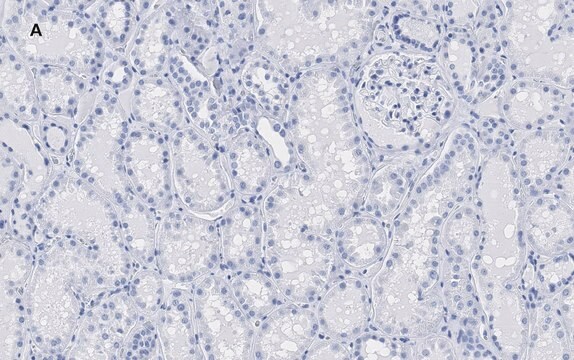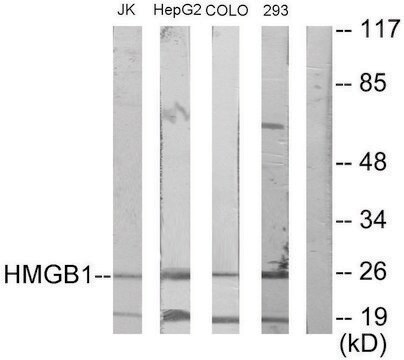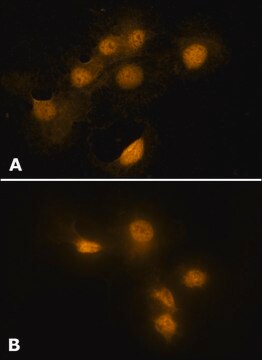H9539
Anticorpo anti-HMGB1 (HMG1) (regione C-terminale)

affinity isolated antibody, buffered aqueous solution
Sinonimo/i:
Anti-Amphoterin, Anti-High mobility group box 1, Anti-High mobility group protein 1
About This Item
Prodotti consigliati
Origine biologica
rabbit
Livello qualitativo
Coniugato
unconjugated
Forma dell’anticorpo
affinity isolated antibody
Tipo di anticorpo
primary antibodies
Clone
polyclonal
Stato
buffered aqueous solution
PM
antigen 25 kDa
Reattività contro le specie
rat, mouse, human
Confezionamento
antibody small pack of 25 μL
Convalida avanzata
independent
Learn more about Antibody Enhanced Validation
tecniche
immunoprecipitation (IP): 5-10 μg using HEK-293T cell lysates.
indirect immunofluorescence: suitable
western blot: 0.5-1 μg/mL using 3T3 or PC12 cell lysates.
N° accesso UniProt
Condizioni di spedizione
dry ice
Temperatura di conservazione
−20°C
modifica post-traduzionali bersaglio
unmodified
Informazioni sul gene
human ... HMGB1(3146)
mouse ... Hmgb1(15289)
rat ... Hmgb1(25459)
Descrizione generale
Immunogeno
Applicazioni
Azioni biochim/fisiol
Stato fisico
Stoccaggio e stabilità
For extended storage, freeze in working aliquots.
Repeated freezing and thawing, or storage in “frostfree” freezers, is not recommended. If slight turbidity occurs upon prolonged storage, clarify the solution by centrifugation before use. Working dilutions should be discarded if not used within 12 hours.
Altre note
Esclusione di responsabilità
Non trovi il prodotto giusto?
Prova il nostro Motore di ricerca dei prodotti.
Prodotti correlati
Codice della classe di stoccaggio
12 - Non Combustible Liquids
Classe di pericolosità dell'acqua (WGK)
nwg
Punto d’infiammabilità (°F)
Not applicable
Punto d’infiammabilità (°C)
Not applicable
Dispositivi di protezione individuale
Eyeshields, Gloves, multi-purpose combination respirator cartridge (US)
Scegli una delle versioni più recenti:
Possiedi già questo prodotto?
I documenti relativi ai prodotti acquistati recentemente sono disponibili nell’Archivio dei documenti.
in vitro function and clinical outcomes in vaccinated melanoma
patients
Il team dei nostri ricercatori vanta grande esperienza in tutte le aree della ricerca quali Life Science, scienza dei materiali, sintesi chimica, cromatografia, discipline analitiche, ecc..
Contatta l'Assistenza Tecnica.







